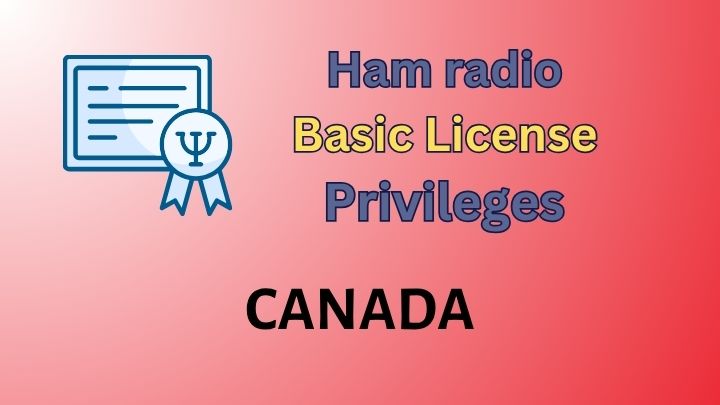If you’re new to ham radio in Canada, getting your Basic License is the first step to getting on the air. But what exactly can you do with this license? This guide breaks down all the privileges, frequencies, and rules you need to know—plus a free PDF cheat sheet to keep handy.
What is a Basic License?
The Basic Qualification is Canada’s entry-level ham radio license, issued by ISED (Innovation, Science and Economic Development Canada). It lets you:
✔ Operate on VHF/UHF bands (like 2m and 70cm)
✔ Use some HF bands (with restrictions)
✔ Talk locally or through repeaters
✔ Assist in emergency communications
You get these privileges after passing a 100-question exam (70% passing score).
Basic License Frequency Privileges
Here’s what you can do with a Basic License (without Honours):
| Band | Frequency Range | Allowed Modes | Power Limit |
|---|---|---|---|
| 2m (VHF) | 144–148 MHz | FM, SSB, Digital | 250W PEP |
| 70cm (UHF) | 420–450 MHz | FM, SSB, Digital | 250W PEP |
| 10m (HF) | 28.1–29.7 MHz | FM, SSB, Digital | 250W PEP |
| 6m | 50–54 MHz | All modes | 250W PEP |
| 1.25m | 222–225 MHz | All modes | 250W PEP |
Note: If you score 80%+ on the exam, you get Honours status, which adds more HF bands (like 80m and 40m).
What Can You Do With a Basic License?
1. Local Communications (VHF/UHF)
- Use repeaters (146–148 MHz for 2m) to extend your range.
- Chat with hams in your city or town.
- Good for emergency comms if cell networks fail.
2. Limited HF (Long-Distance) Access
- 10m band (28.1–29.7 MHz): Works best during solar activity peaks.
- 6m band (50–54 MHz): Can sometimes reach other provinces via “sporadic E” propagation.
3. Digital Modes
- Send text messages via APRS (on 2m).
- Try FT8 (a weak-signal digital mode on 10m).
4. Emergency & Public Service
- Help during storms, floods, or outages (many Canadian hams volunteer with groups like ARES).
Restrictions in Basic License
🚫 No full HF access (e.g., 20m, 40m) unless you have Honours or upgrade to Advanced.
🚫 No broadcasting (you can’t play music or send one-way signals).
🚫 No encrypted messages (all transmissions must be public).
Basic vs. Honours vs. Advanced
| Feature | Basic | Basic + Honours | Advanced |
|---|---|---|---|
| VHF/UHF Access | ✅ Full | ✅ Full | ✅ Full |
| HF Access | ❌ Limited (10m, 6m) | ✅ Full (all bands) | ✅ Full |
| Max Power | 250W PEP | 250W PEP | 1,000W PEP |
| Exam Difficulty | Easier | Same exam (80%+ score) | Harder |
Honours is a free bonus if you score 80%+ on the Basic exam.
Free PDF Download
Get a printable cheat sheet of Basic License privileges:
👉 Download Free PDF (No email required)
Next Steps After Getting Licensed
- Buy a starter radio (like a Baofeng UV-5R for VHF/UHF).
- Find local repeaters (check RAC’s repeater directory).
- Join a club (most Canadian cities have ham radio groups).
Conslusion:
A Basic License gives you plenty of room to explore ham radio—especially if you focus on local VHF/UHF communications. If you want more HF privileges, aim for Honours (80%+ on the exam) or upgrade to Advanced later.
Back to Main category: “Ham Radio Frequencies“

